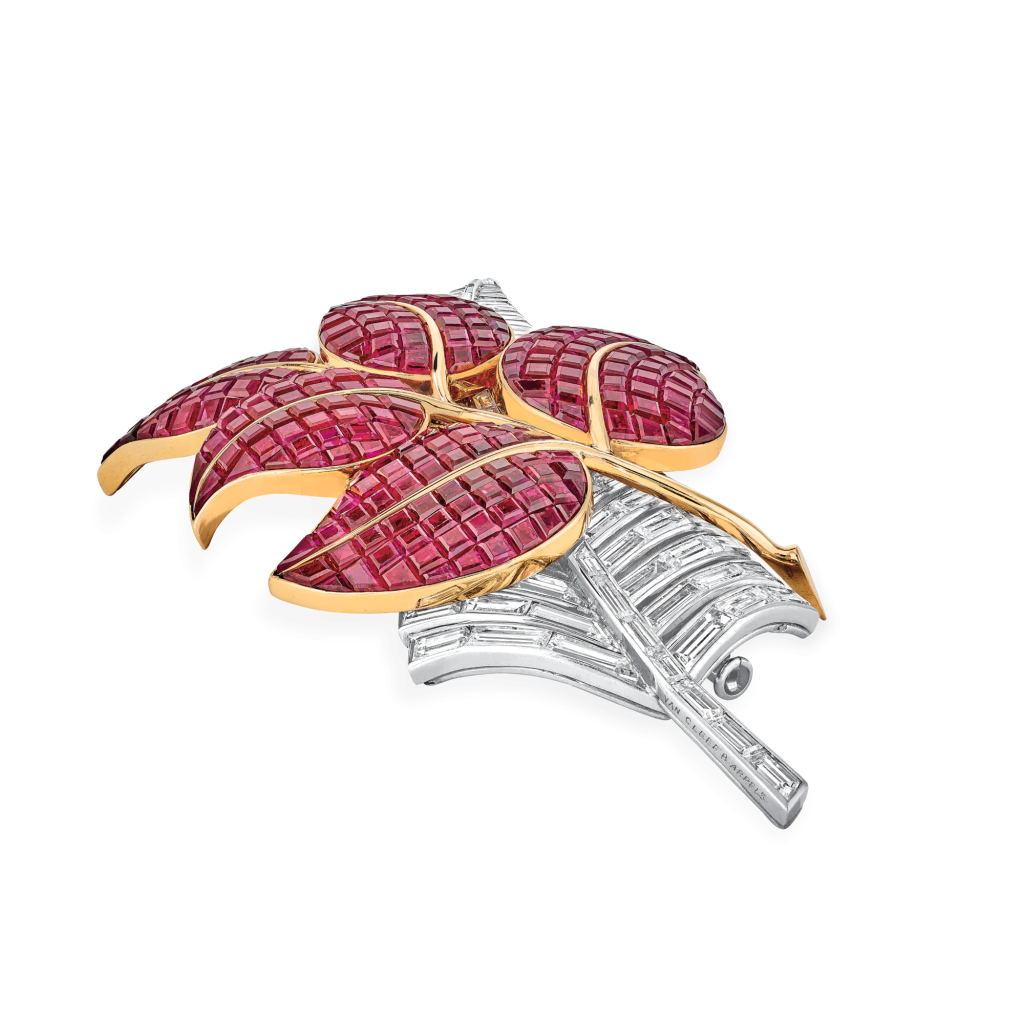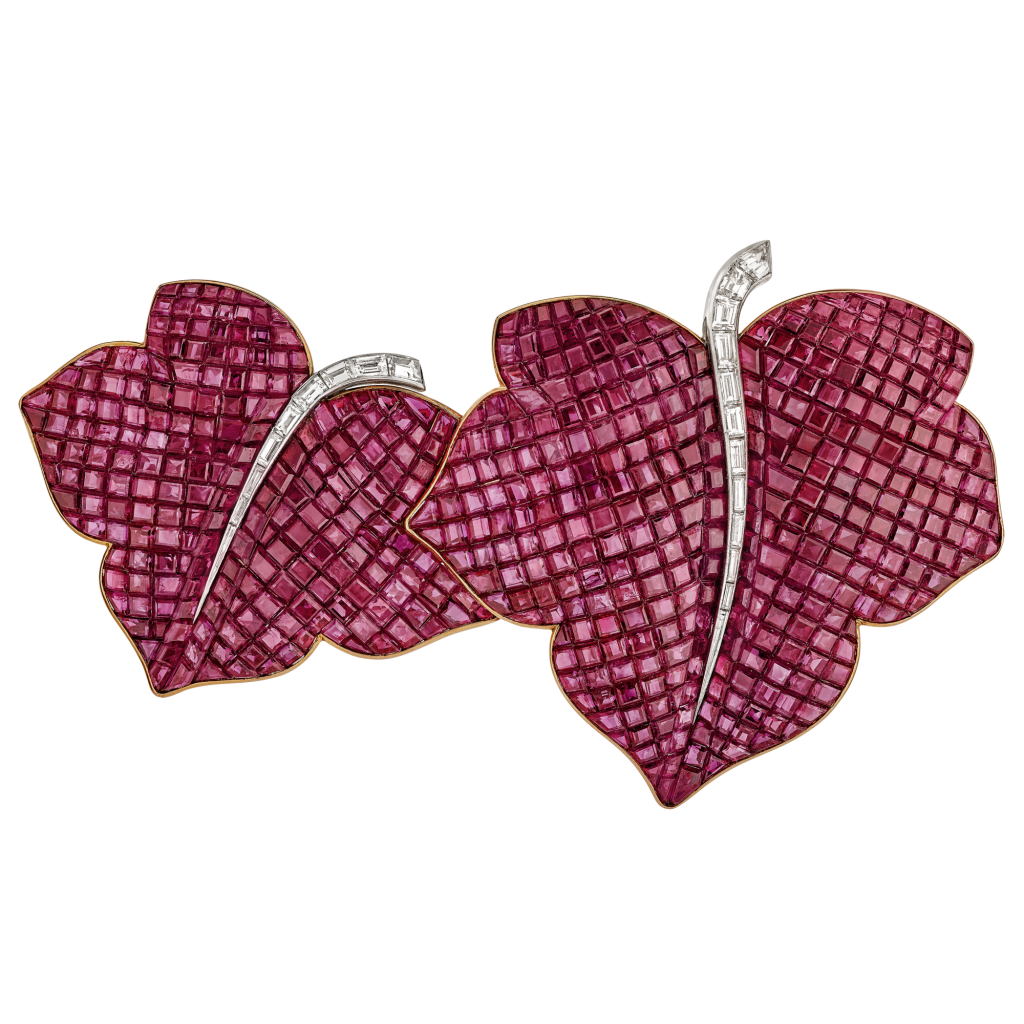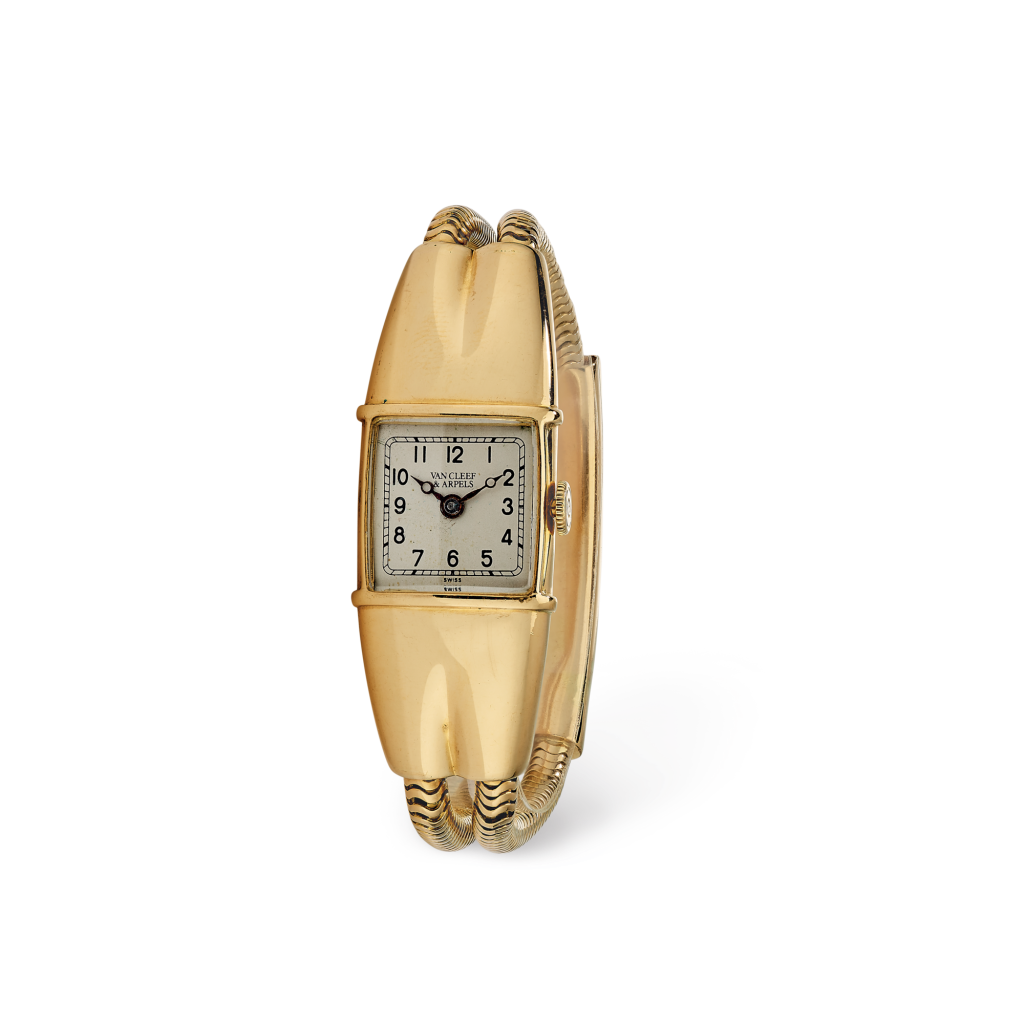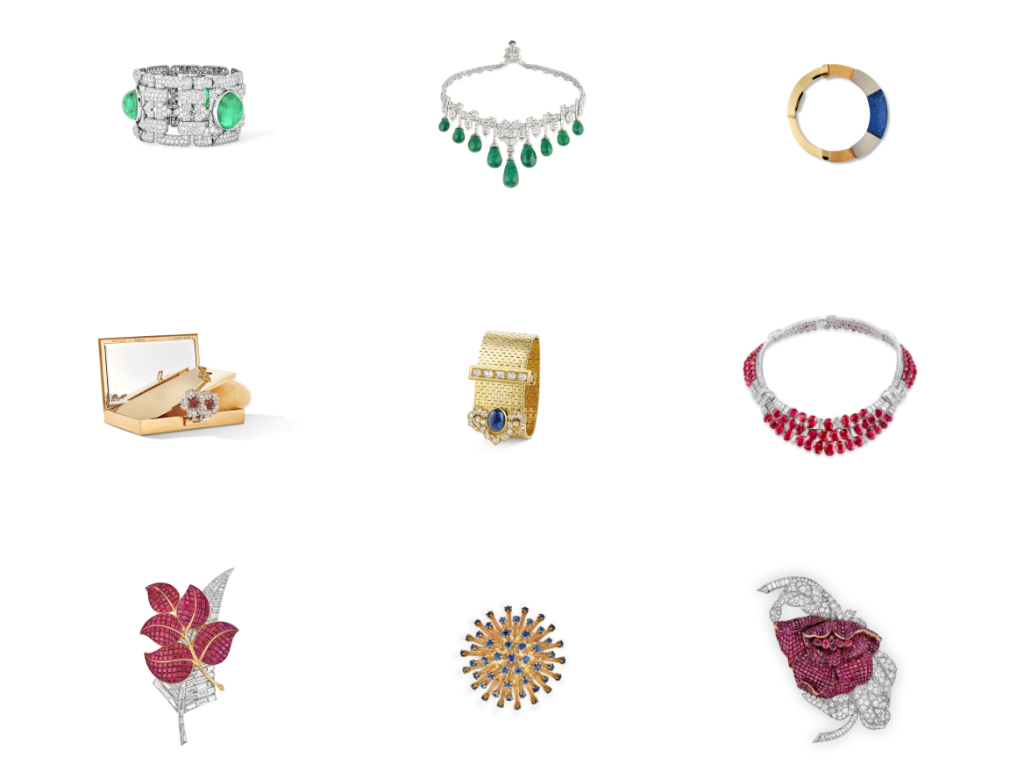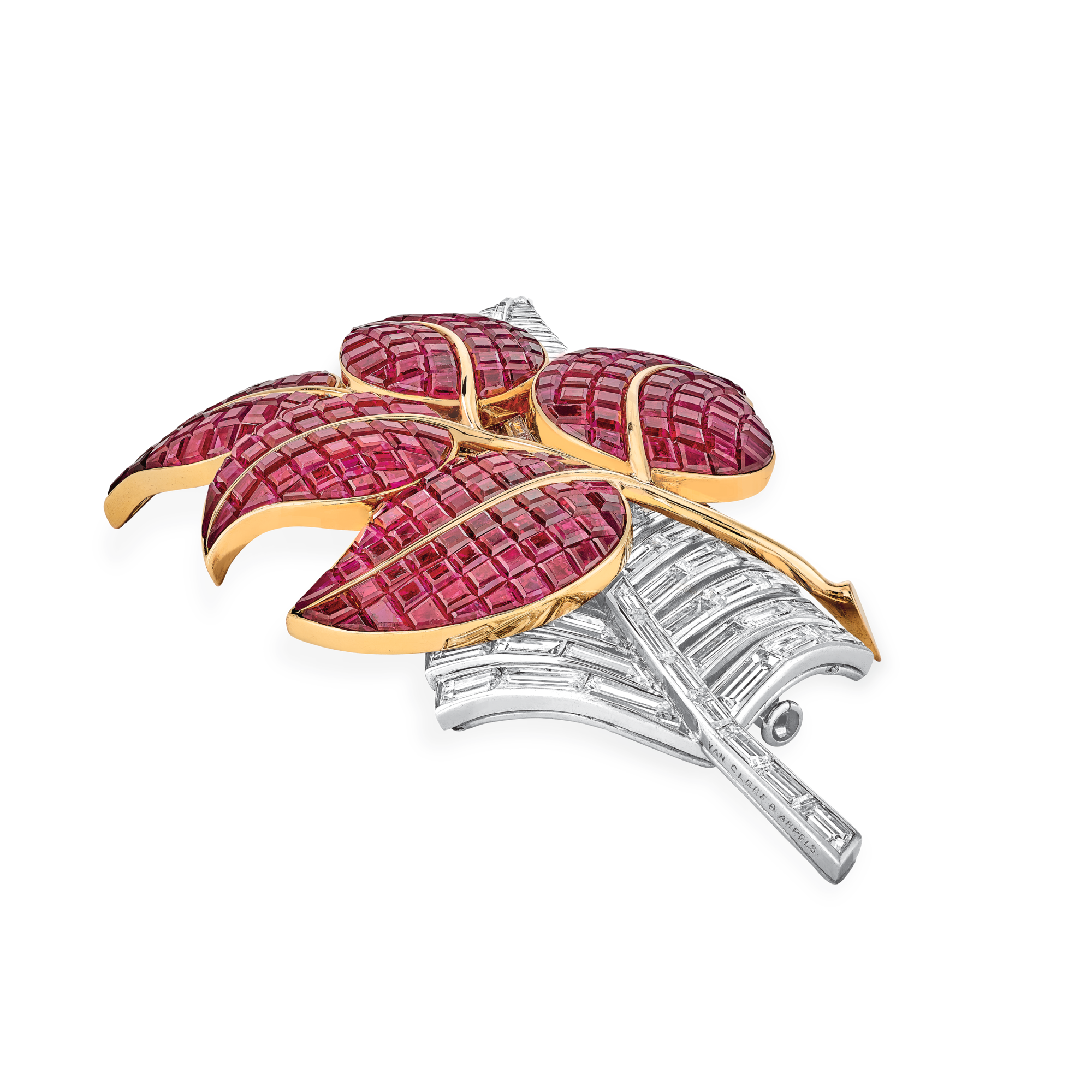
Flower brooch

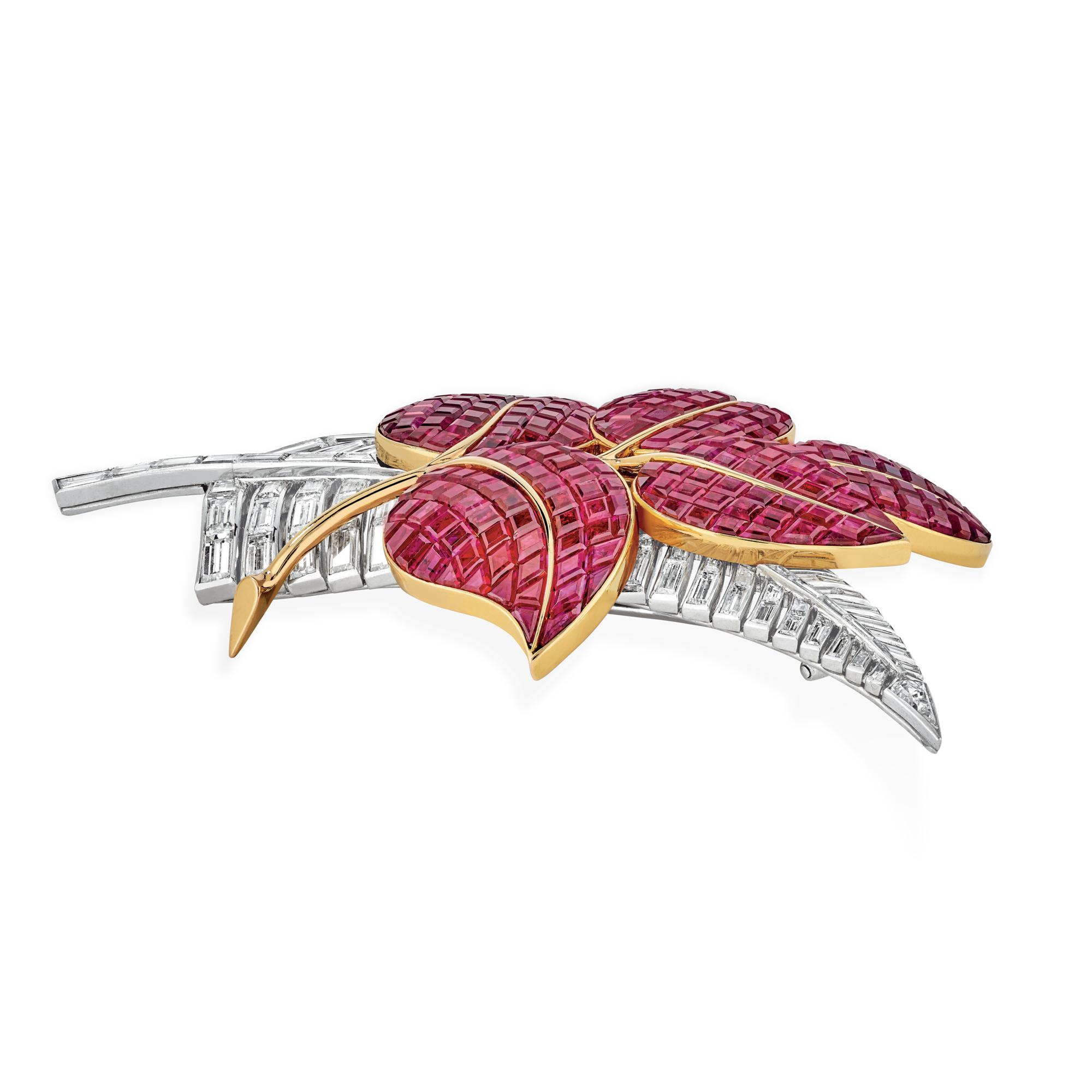
Creation details
- Creation year 1936
- Usage Clip
- Dimensions 85 × 45 mm
This exceptional piece, produced in 1936, was one of the first creations to adapt to the volumes afforded by the mystery set, a technique for which a second patent was registered that same year.
It shows the transition in floral iconography from the esthetic precepts of the Art Deco style to the first signs of greater simplification with the use of curves, which would continue into the 1950s. On top of a fern leaf with stylized fronds composed of rows of baguette-cut diamonds is a branch of polished yellow gold with five mystery set ruby leaves, each having naturalistic, curved contours. The central vein, an extension of the stalk, is rein- forced with yellow gold.
Aesthetic and technical contrasts
This piece is notable for its contrasts: the superimposition of two plants that differ in color, design, and depiction reinforces their respective presences. The yellow gold and rubies on one side reply to the platinum and diamonds on the other. Contrast is also found in the treatment of the gems: the geometry of the baguette cut is answered by the flexible surfaces of the mystery set, a technique that managed to suggest a sense of curves and volumes.1Patent no. 801.863, “The improvement of the methods of setting and mounting stones,” registered by the Société Van Cleef & Arpels on February 13, 1936. Paris, INPI Archives. The naturalistic, curved form of the ruby leaves—along with their positioning, contours, and volumes—contrasts with the rigorously symmetrical straight lines of the baguette-cut diamond leaf, inherited from the 1920s.

A positive reception across the Channel
This brooch was acquired by a British aristocrat in 1936, demon- strating the growing success of the Maison on the other side of the Chan- nel. “Van Cleef and Arpels Ltd.” was established the same year, and an office was opened in England2Memorandum and Articles of Association of Van Cleef & Arpels Limited, September 4, 1936.—a first step prior to the Maison’s expansion on an international scale.
To go deeper
